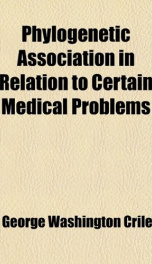man an adaptive mechanism

Purchase of this book includes free trial access to www.million-books.com where you can read more than a million books for free. This is an OCR edition with typos. Excerpt from book: CHAPTER XII ACTION PATTERNS ; CONSCIOUSNESS AND SLEEP Action Patterns We know that the brain contains the mechanism that drives the body; we know that environment drives the brain and that environmental forces reach the brain through the mediation of the sense organs. But what is the mechanism within the brain by means of which a given stimulus causes different effects in different brains? Why will one man run away and another attack on receipt of identical stimuli ? We postulate that the adaptive reactions of the organism are executed by mechanisms, each of which, like a wireless station, awaits the arrival of the specific impulse which is to awaken it to specific response. Between the ceptor organs of the eye, the ear, the nose, the sensory nerve endings in the skin and the nerves governing muscles and glands there intervenes an intricate network of action patterns. As over the same copper wire may be transmitted the voice, a telegraph message, a dynamic charge of electricity for firing a mine, lighting a concert hall or driving an engine, so over the same nerve or group of nerves may be transmitted impulses destined for the production of terror, of sudden flight or of the reactions of eating or drinking. Thus during consciousness thebraiir is the seat of a continual flow of opposing, assisting, crossing and interfering impulses, the amount of fatigue produced being proportional to the number and strength of stimuli that evoke responses, whether these responses be those of gross activity or of mere perception. It is not as difficult as it seems at first to conceive how the most complex reactions have been built out Fio. 77. Cross-section Of Leaf And Hair Of Venus' Fly-trap. Drawing showing the cellular mechanism which corresponds to the nerve path in ani...
Info about the book
Author:
Series:
Unknown
ISBN:
1143177029
Rating:
4/5 (4)Your rating:
0/5
Languge:
English
Users who have this book
Users who want this book
What readers are saying
What do you think? Write your own comment on this book!
write a commentif you like man an adaptive mechanism try:
Do you want to exchange books? It’s EASY!
Get registered and find other users who want to give their favourite books to good hands!






